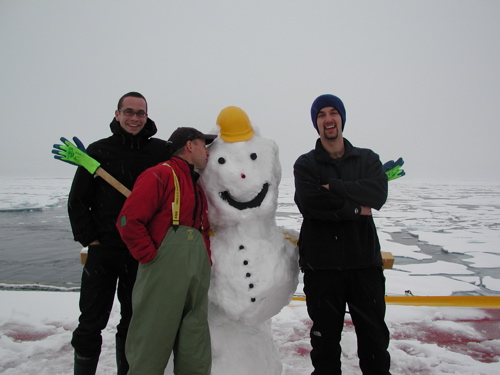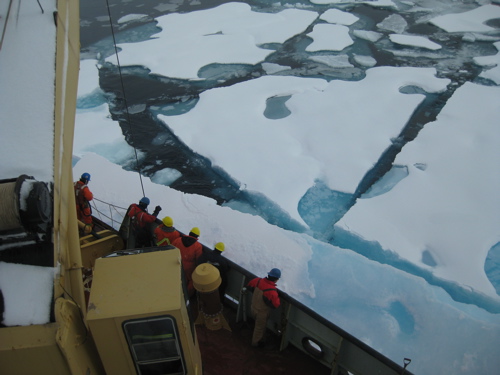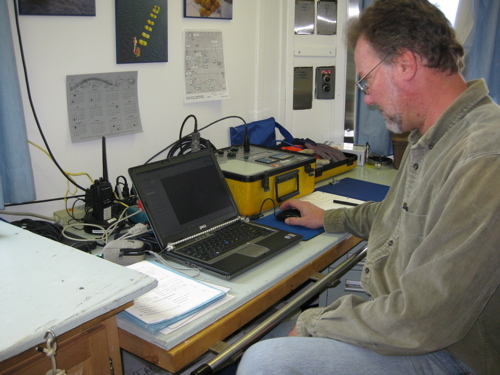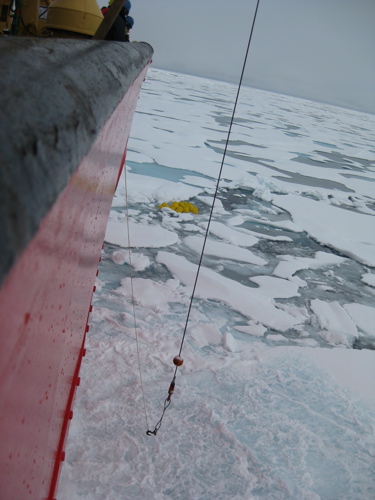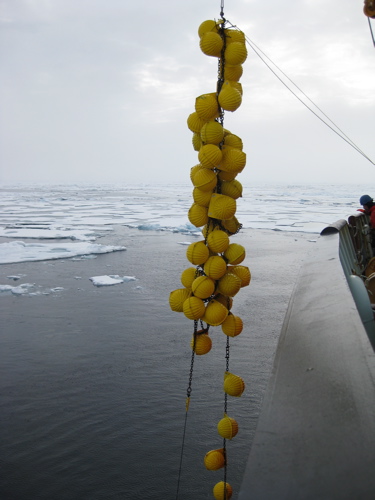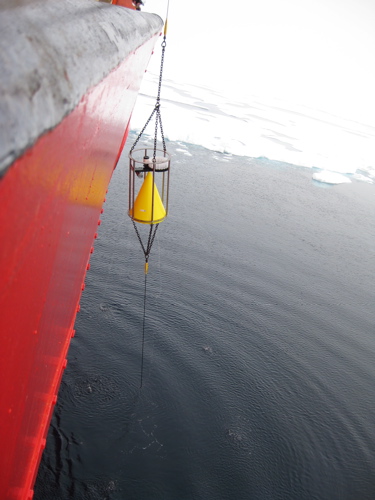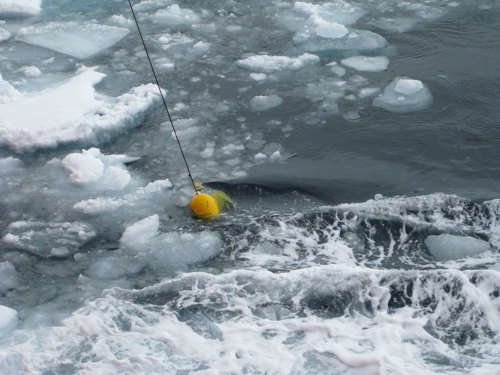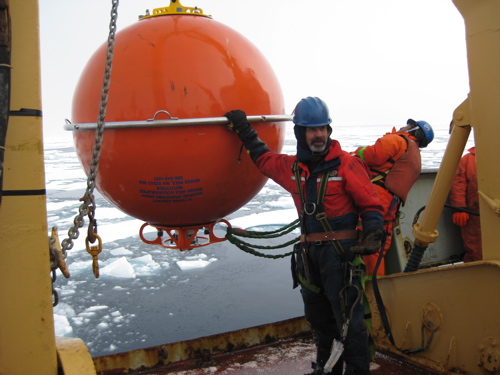Gerty WardJuly 31, 2008We awoke to snow!
The WHOI team is recovering a mooring today. After yesterday's helicopter preview, Captain McNeill knew to expect some ice. To prepare the mooring site, he methodically and skillfully navigated the ship around the mooring site, breaking up and scattering ice. The wind and currents were not cooperating, however, and he had to use both the ship and the bubbler to create a pond large enough to begin recovery. On the Captain's command, Rick sent the acoustic signal to the release mechanism to let go. The first mechanism did not respond, so a signal was sent to the second one (ALWAYS have a back-up!). The second one did respond and let go, but, by this time, wind and currents had pushed ice back into the recovery area. The top float did not emerge....it was a long 30 minutes before we saw the glass balls, the back-up buoyancy, surface (ALWAYS have a back-up!). Moorings are usually recovered from the top float first. Since the top float was somewhere out there under the ice, the WHOI team began recovery from the bottom, the glass balls (see July 27 Dispatch for a mooring diagram).
Everything came aboard upside down.
Bringing aboard the MMP, the alien-looking device with all the data collected over the past year, was especially tricky, requiring exceptional ship control. Finally, the top float popped through the ice and was brought aboard. It was, of course, upside down so it had to be rotated.
In my classroom, I quote often that "chance favors the prepared notebook" which is a modification of Louis Pasteur's quote, "chance favors the prepared mind." Collecting data using sophisticated engineering, equipment and ship control requires preparation. The Arctic adds the "chance!" P.S. Gniroom a Gnirevocer is "Recover a mooring" spelled backwards. All photos by PolarTREC teacher Gerty Ward unless indicated. Last updated: October 7, 2019 | |||||||||||||||||||||||||||||||||||
Copyright ©2007 Woods Hole Oceanographic Institution, All Rights Reserved, Privacy Policy. | |||||||||||||||||||||||||||||||||||


